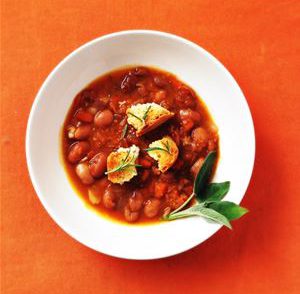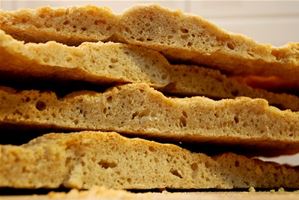Italy’s 54th Art Biennale (see page 20) is finally
here, and in this world of artists and curators set on the backdrop of a city
where the roads are made of water and the taxis are boats, I will set up shop
to cook New Zealand and Venetian fare and to serve the best prosecco known to
humankind, made for me by a Venetian count.
The Venice
Biennale 2011 sounds a lot more complicated than it was when it opened 116
years ago: now, 28 pavilions are used by the 30 countries officially
participating in perpetuity; other countries have asked to particiate, and this
year the number of requested and accepted invites brings the total number of
artists to 89.
And where does
one find this exhibition? Are the works of these 89 world-class artists
exhibited in one beautiful Venetian Palazzo on the Canale Grande? That would be
equivalent to an international exhibition in Paris with all the works in the
Musee d’Orsay.
We are in
Italy, so things, although not easy, are done with an elegance that exceeds any
other country’s ability to dress anything up. First buy your ticket, then go to
the pavilions of the 30 official countries, check out the space in the Arsenale
where some other artists will be, and look for any building that is swathed
from rooftop head to canal-biting toe in white fabric bearing words the size of
elephants. From June to November, this treatment should signal that an artist
is represented within. Then have a look at some churches, where you might find
the altar and inner walls covered in 5-metre-high prints representing an
artist’s work interpreting, perhaps, a butterfly, or even an underground well.
But these are just a few examples: the Biennale is always full of surprises.
For example,
during the previous Biennale, while walking around Venice doing some logistics
management, I stumbled upon an equine artist from Arizona who paints with a
brush in his mouth. This time around, if you go to the Palazzo Loredan
dell’Ambasciatore, you will find a big, beautiful, well-endowed black bull atop
a grand piano, with a New Zealander on the stool playing Italian opera.
If you are
invited to one of the official openings during the Biennale, you may be lucky
enough to see not only some amazing contemporary art, but also sample some of
Venice’s best cuisine, which differs so greatly from the wonders of Tuscany.
But in case you don’t make to La Serenissima, here is a recipe for one of my
Venetian favourites, which I will be preparing a number of times during the
month of June for various events in Venice.
Buon appetito!
RECIPE
Baccala mantecato
con polenta bianco perla
Ingredients
200 g baccala (stoccafisso, salted cod)
1 fragrant lemon
2 bay leaves
Pepper
Extra-virgin olive oil DOP Veneto
In the region of Veneto, the oil is more subtle, light, fruity, refined
and sometimes with a slight almond back note, making it more delicate and less
spicy than Tuscany’s larger extra-virgin olive oil flavours, which generally
include grassiness and fruit, followed by a strong, pleasant peppery finish.
This would mask the flavour of the fish too much.
In Venice every alimentari and supermarket sells polenta precotta, and more often than not you
will find the white polenta made from the pearl ears of corn, a classic in the
Veneto region. It is so good that I generally buy a refrigerated packet of this
polenta to slice up, rub with a local extra-virgin olive oil and grill before
topping it with baccala mantecato.
Method
First ensure the baccala is from a reputed source; it
should have been soaked for a minimum of three days, in fresh cold water,
changed twice daily. If you don’t know a trusted local supplier, it is best to
buy the baccala fillets salted and dried and
soak them yourself in the fridge, changing the water at least twice a day for a
minimum of three days. If this is the case be sure to buy the fattest pieces of
baccala, not the tail end of the
fillets, which are drier and so salty it seems impossible to soak it all out.
Put the softened and rinsed baccalà in a pot with ice-cold water and bring it very slowly to a boil,
simmering gently for about 30 minutes until the fish is soft and breaking
apart; remove from the pot and flake the fish.
With a stone or wood mortar and pestle, begin to pound the cooked soft
flakes of fish a bit at a time. This is not a time to be gentle or afraid,
really pound the flesh into a pulp, slowly adding a thin drizzle of the local
extra-virgin oil while continuing to pound the fish. This process is similar to
making a no-egg-mayonnaise yet without the whisk: keep pounding the fish and
adding drizzles of oil to incorporate, then when it is a thick, rich, white
tasty cream, add the seasoning to taste.
Slice and grill your polenta, and place some of this delicious baccala mantecato on top of each slice. If you
prefer, grill some Tuscan bread, sprinkle with olive oil and sea salt and then
top it with the baccala.
Wine match
These taste sensations ask for a wine as lightly aromatic and fragrant
as this dish, and with some freshness and pleasant acidity to balance the oil
component. Where a extra-dry prosecco can be sweet and simple, the prosecco I
get from Count Marcello offers so many other dimensions, including a fine
freshness and balance. For further information on how to source Count Marcello’s
prosecco, contact me directly at rachel@prodigal-daughter.com







